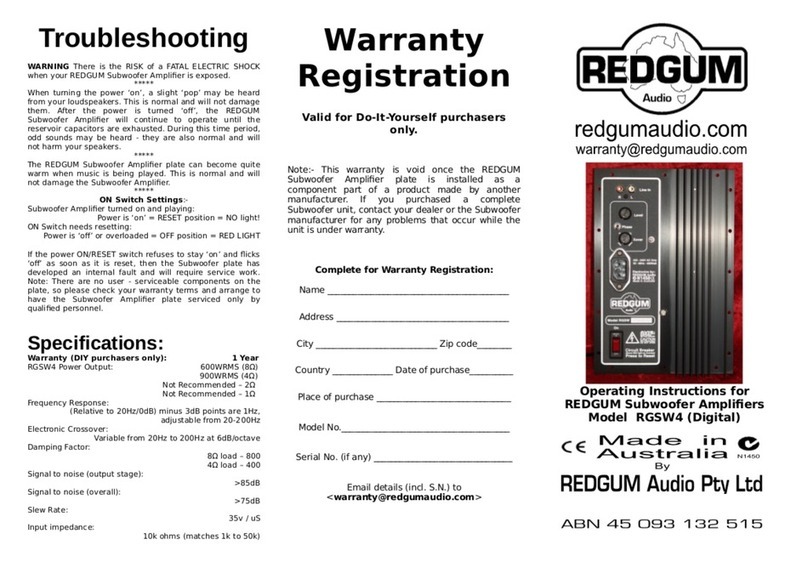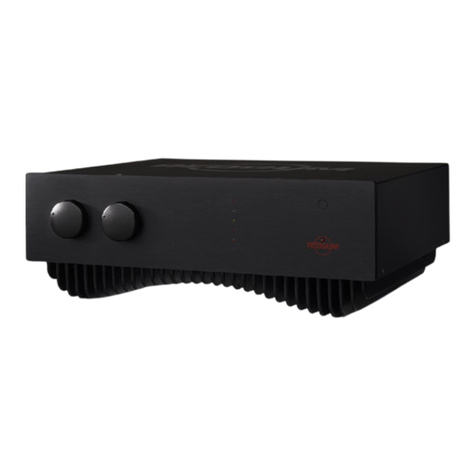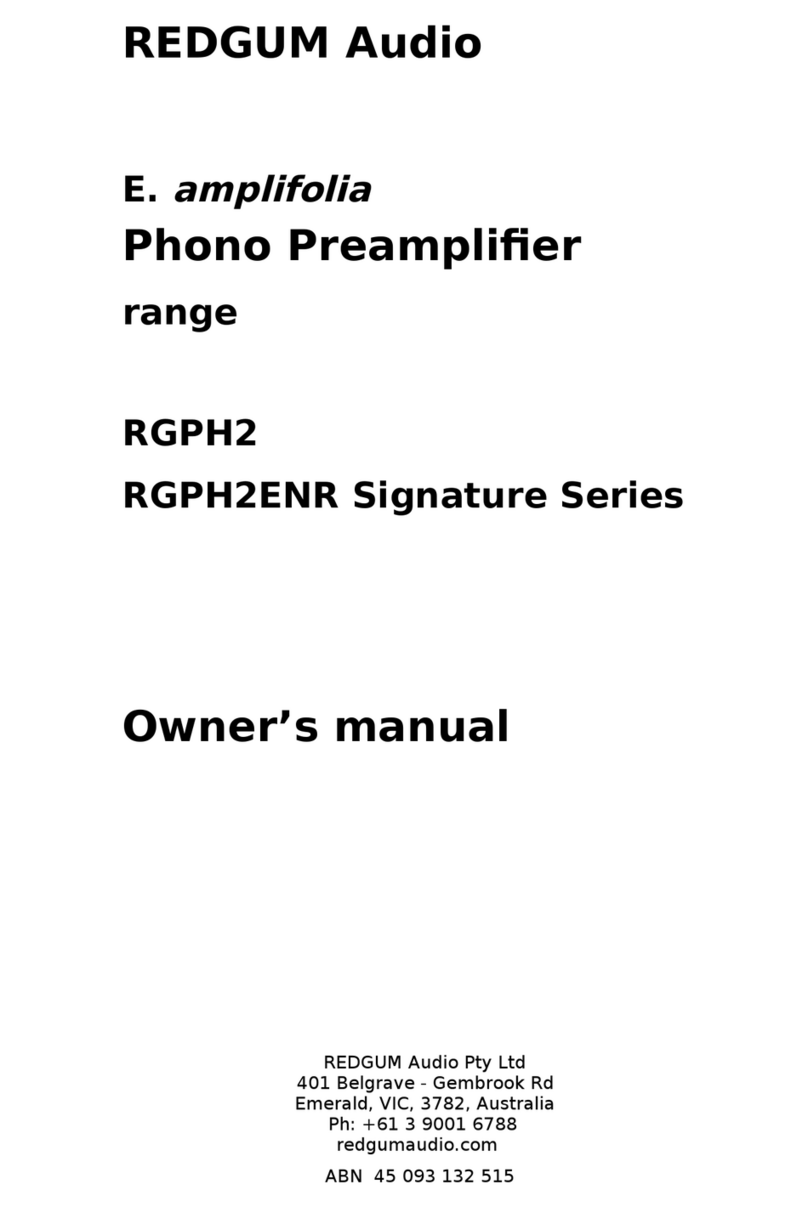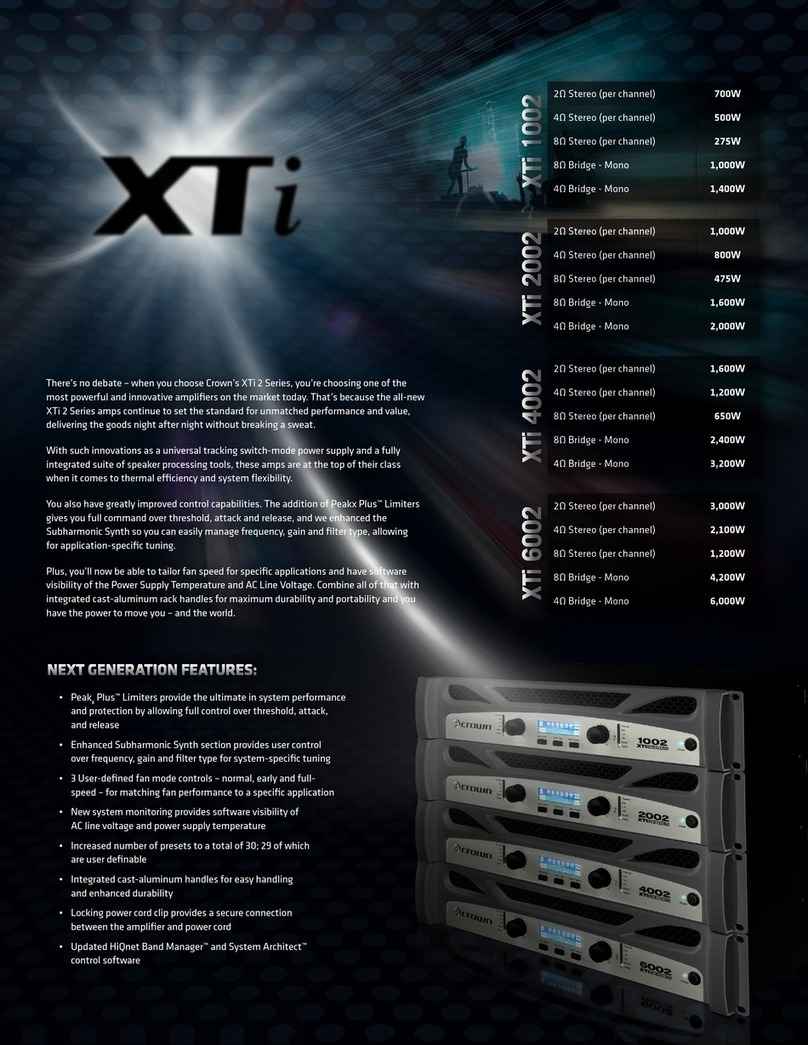Why do I hear sounds when turning my amplifier on and off?
You can expect to hear sounds from your loudspeakers when turning your
REDGUM amplifier on and off. Usually, you will hear a slight ‘pop’ sound
when turning on, and a couple of low 'thunk' sounds when turning off.
These sounds are caused by electrical energy increasing and decreasing
within the amplifier. They are a sign that your amplifier is operating
normally, and are not a cause for concern.
More on 'thunks'
In greater detail, REDGUM amplifiers make audible 'thunks' when powered
up and down, but usually only the latter ones are noticeable to people. A
REDGUM amplifier has no need to mask this sound with a troublesome
relay in the speaker line. In fact, customers can be reassured that this
sound is a healthy sign that the amplifier is flexible enough to cope with
such rapid changes in the power supply.
What actually causes the 'thunks' is best explained for the process during
the powering down of a REDGUM integrated amplifier (35W, 60W or
120W), which has both channels run from a shared power supply. When
the system is turned off, the first and weaker 'thunk' comes from both
speakers together, as the power in the supply (which is common to both
channels) “settles” below the voltage required for stable operation. The
voltage available to the amplifier continues to fall till eventually the
output stage of one of the channels goes into conduction, thus grabbing
and dumping the remaining stored power into the speaker line of that
channel. This dumping causes the remaining supply of power to collapse,
causing the third and loudest 'thunk', but only through the channel where
it was dumped.
As a result, the second channel is left with virtually no power to access
from the shared supply. Since the separate output stages of the channels
have reached their critical cut-off voltages sequentially, the second
channel is deprived of the power required to produce a sound of the same
proportions as the loud 'thunk' from the first channel. Because of
component tolerances, the final 'thunk' sound is usually heard from the
same channel.
This same process occurs with the 170W and 300W monoblock REDGUM
amplifiers, but with both channels producing their final ‘thunks’, each in
their own time. Each channel has its own power supply, so the fall in
voltage affects only that channel, causing it to collapse as described
above.







































